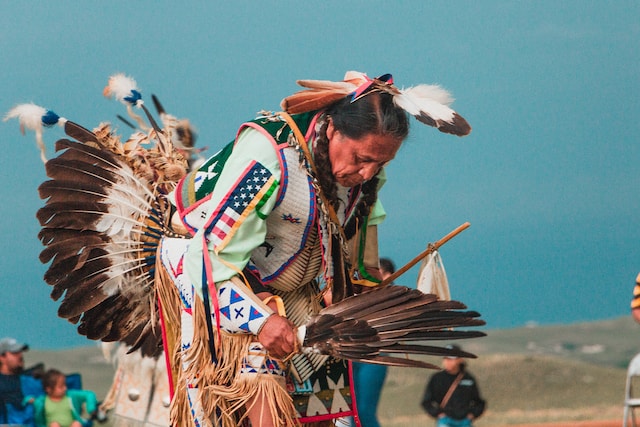If you’re like most people, you’ve heard family stories about your Native American ancestors. Whether true or not, these stories can give clues about your Ancestry.
Tracing your American Indian heritage can be challenging–just as tracing other ethnic groups–but you can use plenty of tools and techniques to get started.
The Challenges
There are many challenges to researching Native American Ancestry, including the potential to find a family story that has no documentation. This is a common problem with family history, but it doesn’t mean your ancestors had no Native American ties.
Another research challenge is finding records specific to your ancestor’s tribe or tribal group. These can be challenging, as there is no centralized repository of all the information related to a particular tribe or ethnic group.
Fortunately, there are still several resources available to help with this challenge. These sources often include books, small collections of documents and records, and archival repositories such as libraries.
It is important to note that tribal enrollment processes differ from national governments in determining whether an individual is a member of a specific tribe. Tribes define membership based on several factors, including documented descent from enrolled members, and they have processes in place to verify the authenticity of claims made by individuals seeking enrollment.
Because of these issues, it is essential to avoid recruitment based on membership in a single tribe as a requisite for participation. This can be difficult for tribal communities that are geographically separated from each other or have separate legal and cultural histories. For these reasons, we opted to recruit participants instead based on self-identification as “Native American” without membership in any one tribe as a requisite for participation.
The Rewards
Native American research is an exciting and rewarding endeavor. As you explore your family’s past, you’ll discover how much your ancestors had to endure and what a proud heritage they left behind.
In addition, you’ll gain a more comprehensive understanding of how your ancestors were impacted by the many events and changes in their history that have shaped their identities. For example, you may learn that your ancestor was adopted or removed from their tribal communities.
You’ll also discover how their lives have been shaped by systemic oppression that ejected them from traditional cultures and reshaped the social and political landscapes they inhabited. This information, often difficult to find in other genealogical research, provides an essential context for your own experiences of genetic ancestry testing (GAT) and its challenges.
The authors of this article have done a great job of raising many exciting issues surrounding the use of GAT and its impact on Indigenous identity. These findings are timely and critical to the more significant debates about the use of genetics in the US, particularly among Indigenous peoples.
Ultimately, I think it’s important to realize that using GAT to establish Native American Ancestry and tribal affiliation is a political act deeply rooted in the US’s long-troubled history of racial identity politics. For those who take advantage of this political tool, it may be a way to secure financial benefits or social status, as was the case with a recent claim by Elizabeth Warren to Native Ancestry.
Read More:
7 Restful Ways To Create Good Sleeping Habits
The Resources
American Indian Ancestry is a fascinating and largely untapped resource for researchers. The country’s tumultuous history with tribes is a treasure trove of records and sources that can help you unearth clues about your Native American heritage, but you will need to know where to look.
The best place to start is with the largest repository of tribal information available — the National Archives and Records Administration (NARA). NARA has an extensive collection of rolls enumerating people living on reservations, most of which have been microfilmed.
These rolls contain names, dates, locations, tribal affiliations, and family relationships for various tribes. The rolls are particularly helpful for tracing ancestors not registered with a specific tribe.
Other government records can also help confirm your American Indian Ancestry. These include treaty and annuity rolls, which enumerated tribe members who received land or goods as compensation for their lands or rights to a particular territory.
These rolls are usually the only federal documents that name tribes before they became reservations. These records are now available on Ancestry and through NARA and the Department of Interior. The Dawes Rolls, for example, are accessible online and have a tutorial to help you get started. The site also links other resources and articles to help your research.
The Time Commitment
Researching your Native American Ancestry requires time and effort. You’ll need to locate historical records, document your lineage, and find your ancestors’ descendants.
Your family stories and oral traditions can be beneficial in tracing your Ancestry. They may provide clues about the tribe your ancestor belonged to. Your ancestors’ names, dates of birth, places of origin, and tribal affiliations may also be essential factors in your search.
A family member or relative with Native American Ancestry can help you get started by providing information and documents. This could include family history, genealogical charts, or other sources that tell you about your ancestors’ lives.
You can also use consumer ancestry tests to learn more about your heritage. These can give you a glimpse of your genetics and how they relate to those of your relatives, but they won’t be legally valid proof of your Ancestry.
If you’re unsatisfied with your results, you can always try a DNA test for yourself or your relatives. Some people do well with these tests, while others struggle.
Once you have a positive DNA result, it’s time to do some digging. It’s a good idea, to begin with the oldest family members first and work your way back, one generation at a time. It’s also helpful to know what kind of tribe your ancestor belonged to, their customs and beliefs, and where they settled during their lifetime.

